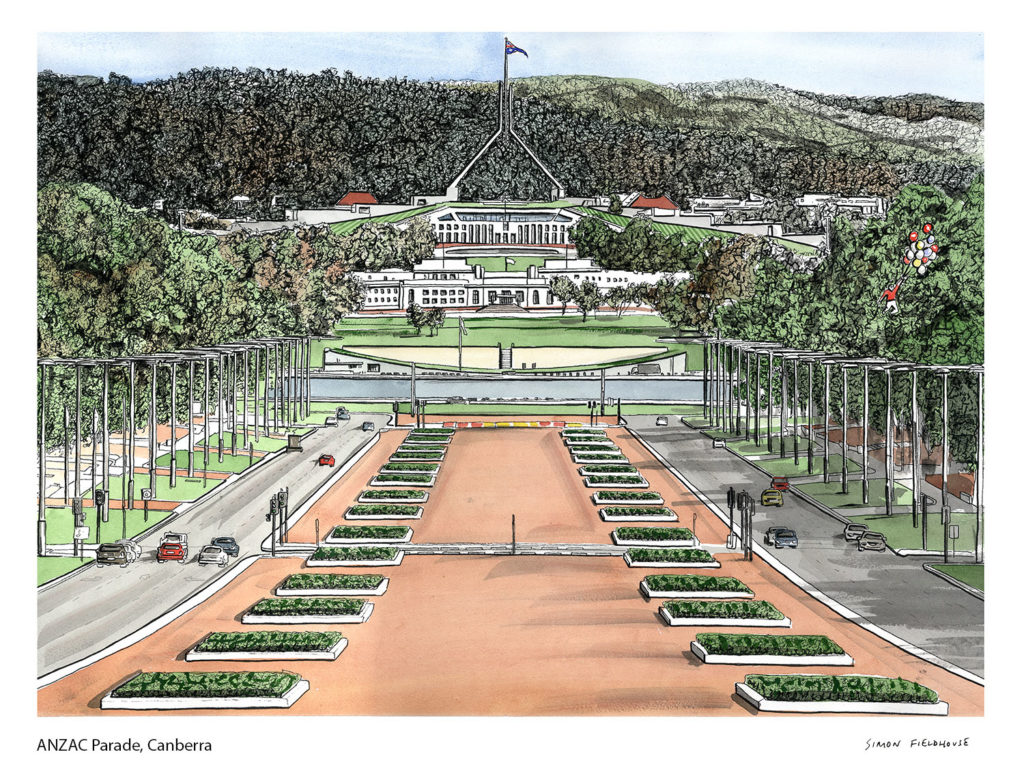
ANZAC Parade Canberra
ANZAC Parade Canberra is a significant road and thoroughfare in the Australian capital Canberra, is used for ceremonial occasions and is the site of many major military memorials.
Named in honour of the Australian and New Zealand Army Corps of World War I, ANZAC Parade joins Gallipoli Reach of Lake Burley Griffin in the south and the Australian War Memorial to the north, is on the main axis between Parliament House and Mount Ainslie, and is the bisector of Constitution Avenue that forms the side of the Parliamentary Triangle between Civic and Russell Hill.
The Parade is flanked by Eucalyptus trees on gently sloping banks either side of the three-lane, one-way roads centred by a wide parade ground topped with granulated rock (similar to scoria) with planted boxes of a low bush called Hebe. The Eucalypts are Australian; and the Hebe comes from New Zealand. The Parade is also flanked by the streets of Anzac Park West and Anzac Park East on either side of Anzac Park.
On ANZAC Day, 25 April and other ceremonial occasions the Parade and adjoining streets may be blocked off to provide a parade route for formed groups of armed services personnel and veterans to proceed either along the central parade route or the flanking roads. Removable concrete kerbs to facilitate marching along the central parade route are at the cross streets, Parkes Way, Constitution Avenue, Currong Street/BlameyCrescent, and Limestone Avenue/Fairbairn Avenue.
In the manner of interpretation of museum displays, the memorials are accompanied by several forms of signage to assist the passer-by. Each memorial has various plaques or foundation stones that were laid at the time of unveiling. Additionally, interpretative signage in a common format has been provided by the Government of Australia adjacent to each memorial that gives succinct information about the nature and/or the site of the people or group or events leading to the establishment of the memorial.